10 things you want to know about ballet
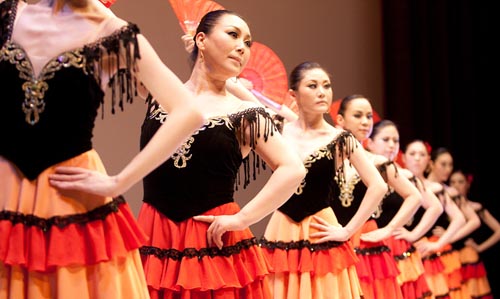
Women perform in the Korea National Ballet Academy’s annual recital last October at Naru Art Center, eastern Seoul. Provided by the Korea National Ballet Company Academy
Ballet, a genre long-considered class exclusive, recently emerged as a new cultural fad, cutting across social barriers in countries around the world, including Korea.
Tickets sold out fast for the French classical ballet “Giselle,” which the Korea National Ballet staged for four days last month. It was the first time a production run was sold out in the troupe’s 49-year history.
Jung Jin-a, a full-time instructor at the Korea National Ballet Academy, said interest in ballet has soared, and her academy has seen an increase in the number of new adult students. “We normally had 30 people in each beginner’s class, but now we have up to 44. It’s amazing how ballet has become so popular.”
Ballet’s newfound popularity is partly attributed to the film “Black Swan,” which received a nomination for Best Picture at this year’s Academy Awards. The success of the Hollywood film, starring Oscar-winning actress Natalie Portman, has rekindled interest in ballet, causing many to pick it up as a hobby.
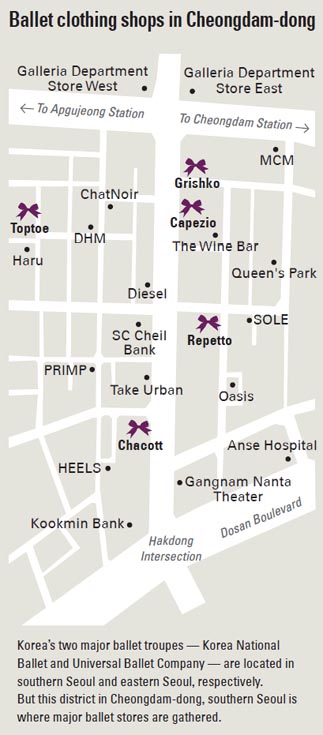
The following Q&A is for those interested in achieving their childhood dreams. Interviews were conducted with Lee Meeha, head of Universal Ballet Academy Gangnam; Jung Jin-a, a full-time lecturer at the Korea National Ballet Academy; and Lee Hyun-jin, head of Genie Ballet Academy.
1. Where’s a good place to start for those interested in ballet?
There are dozens of ballet institutes in Seoul, although the majority are in the southern part of the city. Classes are divided according to students’ levels - from beginner to intermediate. Classes take place up to three times a week (90 minutes per class), but you may also choose weekend classes. Tuition for four classes per month is around 200,000 won ($180).
2. Is there an age limit to start ballet?
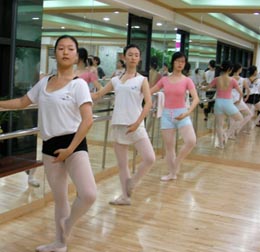
Amateurs learn ballet at Genie Ballet Academy, western Seoul. Provided by Genie Ballet Academy
3. Can even someone with little flexibility learn ballet?
Someone with a stiff body can actually become more flexible through ballet. It’s also good for those who think they are fat. Think of it as exercise. You can lose weight by doing ballet, and your body definitely gets more toned while dancing to beautiful classical music. Music is a quintessential part of ballet class. It is played from the warm-up until the end.
4. Can men take ballet classes?
Of course. We have men in our classes. They range from university students to those in their 30s and 40s, who are company employees or business owners. Although ballet doesn’t really help you get muscular like a bodybuilder, it helps you get fit. It is recommended for those men who want to fulfill their artistic needs.
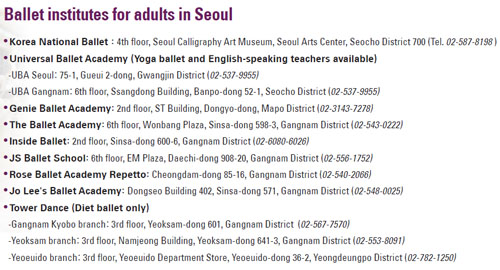
It helps improve your posture and tone your body, since it works muscles you don’t usually use that much. A series of simple exercises called the barre is designed to help build poise and grace. It also helps you relieve stress and develop creative expression.
6. Are beginners required to don full ballet wear?
One of the biggest obstacles for novices is the perception that they should wear leotards and ballet tights. Many who are not confident about their body are reluctant to reveal their physique. So we encourage beginners to start with comfortable clothes such as those worn at yoga classes. But in most cases, they adopt ballet wear like the ones professional ballet dancers wear.
7. What is the difference between ballet slippers and pointe shoes?
Slippers are flexible, while pointe shoes are box-toed. Slippers usually come in canvas or leather. Some styles come with an elastic strap attached to keep the slipper securely on your foot. Sometimes you need to adjust the strap to the size of your feet and sew them on your own. Even beginners should wear slippers to increase friction against the floor to prevent injury. Pointe shoes, also called toe shoes, are made of shiny satin with two fabric ribbons and an elastic band and contain a hard enclosure within the front end of the shoe, named the box. They are used by advanced ballet dancers for pointe work, or moves that require balancing on the tips of their toes.
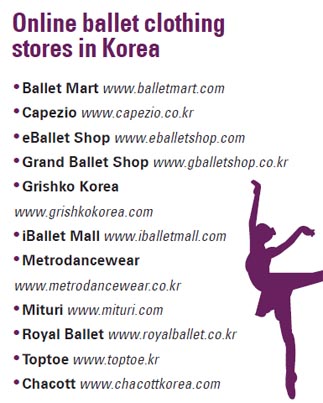
You should train in ballet for at least six months before wearing pointe shoes. In fact, the minimum period is much longer for students majoring in ballet so they don’t get injured before they build a sufficient level of muscle strength. But for those who learn ballet as a hobby, the challenge to stand on their toes is meaningful in itself. Since they don’t require perfect technique, we usually allow them to do the maneuver while leaning on a bar.
9. Why do ballerinas wear tutus?
Ballet began in Europe in the medieval period as a form of dance performed by aristocrats. At that time, they wore lengthy, beautiful costumes that usually showed the tips of their toes. But as ballet developed into a stage performance done by dancers and as techniques evolved, costumes shifted to showing more of the dancers’ legs. Skirt lengths were shortened as time went by, and the classical tutu, often called pancake tutu, is the minimum length allowed.
10. Can adult beginners become good enough to perform on stage?
It is almost impossible for adult beginners to reach the level of professional dancers. But if one strictly trains for a specific ballet work for at least three months, it is possible that he or she could perform on stage.
Most ballet institutes hold annual recitals put on by their students. Genie Ballet Academy in western Seoul, which caters only to those learning ballet as a hobby, designates a segment from a classical ballet work every month for intermediate students.
By Seo Ji-eun [spring@joongang.co.kr]










with the Korea JoongAng Daily
To write comments, please log in to one of the accounts.
Standards Board Policy (0/250자)